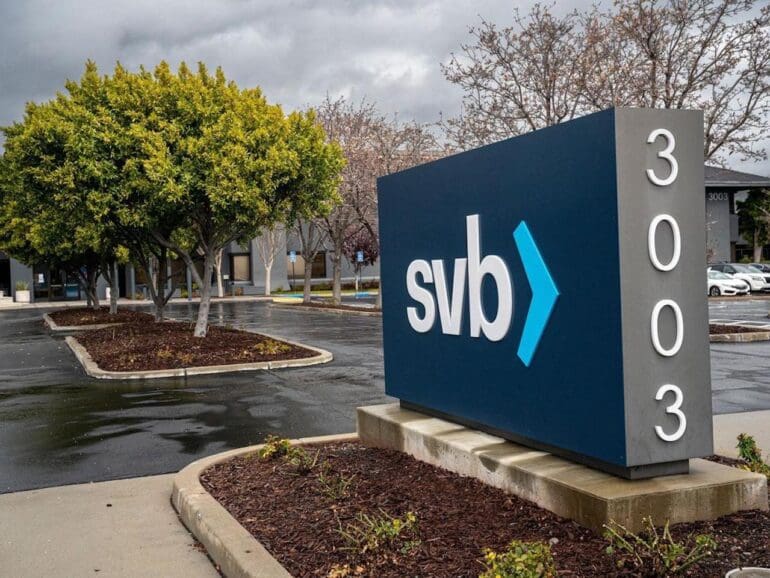The collapse of Silicon Valley Bank (SVB) will improve financial system health if it moves society towards decentralized systems, one fintech CEO says.
A move to DeFi pulls the system away from single points of failure that caused the most damage over the past few weeks, Paystand CEO Jeremy Almond said.
As he watched SVB unravel, Almond was reminded that when cash is trapped, it is an existential threat to a company.
DeFi helps eliminate single failure points
Cash is the lifeblood of business. When trapped for any reason, it is an existential threat to the company. A business must have faith that its cash is always available in the most efficient way.
That, of course, has always mattered. Post-SVB, many realized that despite all the efforts to insulate the financial system over the past 15 years, there are still single points of failure. Companies need a better risk mitigation strategy than having all their funds in one institution.
Almond said that as one of the largest blockchain and DeFi networks, Paystand customers could access their cash more efficiently and at lower costs. Receivable and cash flow processes are more efficient. There are no costly bank network transaction fees.
Also, read:
That is thanks to the blockchain, which sits behind the scenes. Almond said companies would judge options by their results as they look to mitigate risk post-SVB better. Blockchain effectiveness is no longer philosophical; it can clearly address counterparty risk.
“What are the systemic risks that happen when a bank fails?” Almond asked. “The Fed has to come and backstop it. These things have become top of mind for every business leader in the country today. DeFi became the decentralized solution because single points of failure are bad for the company, employees, and our system.”
Fostering DeFi adoption via generic growth
Paystand has new features that help companies diversify their holdings. Smart Treasury Management for Accounts Receivable lets businesses automatically divert accounts receivable to preferred accounts upon receipt. They can also instantly pay bills with those AR funds. Merchants can route funds to DeFi Cards without exiting Paystand’s network.
The recent collapse confirmed for Almond that DeFi (and bitcoin as a corporate treasury) has a broader role in the financial system. Paystand keeps a portion of its treasury in digital assets and encourages others to do the same.
More companies than most realize are doing that. This is one way to show regulators that DeFi and digital assets play positive economic roles.
“The more positive take that the regulators give, with more clear guidance for good acting financial institutions like us, allows the U.S. to have a less brittle, less single point of failure economy,” Almond said. “We want to be ahead of these things, not reactive.
U.S. falling behind in global DeFi race
“The U.S. led regulation and guidance around the Internet,” Almond said. “The U.S. led around mobile and social. Boy, it would be a shame if we didn’t lead regulation and guidance around digital assets and DeFi networks that actually make us a stronger financial system and economy.”

And the U.S. already needs to catch up. The fastest-growing DeFi areas and the biggest embracers of digital assets are in emerging markets like Africa and Central and South America, thanks to a lack of legacy infrastructure and high inflation. Necessity was the mother of invention.
As these regions embrace innovation, the U.S. fails to provide the regulatory clarity that companies like Paystand need to build the systems of tomorrow and keep them stateside. Had the authorities seen the systemic problems earlier and reacted properly, the U.S. would have been much stronger today.
“They’re throwing the baby out with the bathwater,” Almond said. “They looked at some of the bad actors, whether FTX or MtGox and didn’t give regulatory clarity. The most innovative companies trying to build tomorrow’s financial future lack clarity in the U.S.
“What we want to give them is clarity and encouragement because the Internet rethought how we did communication, rethinks how we do media, rethinks how we enable access to technology. But you had to have a forward-looking stance, and the U.S. does not currently have that.”
Almond credited some state-level agencies for taking steps, and if more don’t answer the SVB wake-up call, he wonders what will jolt them. He said more bank deposits left US banks post-SVB than at any other point in U.S. history. In that reckoning, the first question should be how to avoid centralization. Luckily, a solution is in place.
How DeFi combats single failure points
DeFi networks offer a straightforward solution to single failure points. More than 100 million wallets are holding digital assets. Up to 20% of U.S. working-age adults have some digital currency investment. More corporations than we know hold digital assets in their treasuries. There’s momentum forming. Hopefully, regulators and politicians will see it.
“This stuff is out there,” Almond said. “They can’t pretend it doesn’t exist; they can’t pretend that people don’t want to use it. Decentralization is a positive value in financial institutions. Recognize that it’s real, it’s at scale, and it’s material. You need a great many companies to be lawfully good.”
Almond stressed that B2B and corporations follow the typical adoption pattern behind consumers. It happened with the Internet decades before businesses embraced the cloud.
Paystand serves the bread-and-butter, everyday businesses that the economy needs to remain healthy, Almond said. And those companies operate better on the blockchain. Prove it with clear, real-life examples of value creation.
Deliberate steps to improve DeFi visibility, positive use cases
Educating regulators also helps, and Almond sees more people advocating for decentralization in Washington. Politely show the difference between scammy crypto assets and decentralized technologies that clearly reduce risk. Be patient and expect the progress to be incremental when it comes.
Almond does his part to raise DeFi visibility. Together with VC Megan Guy, he started the podcast ReDeFined. Its goal is to share those positive examples of how DeFi and digital assets are helping the economy.


